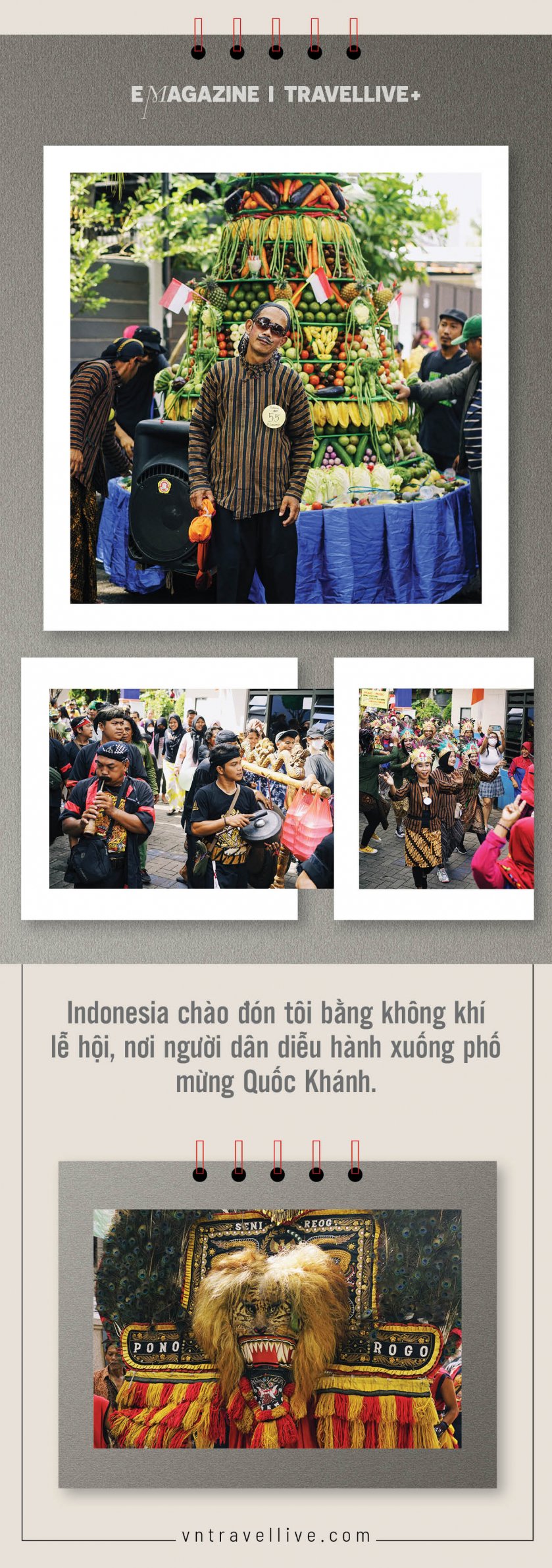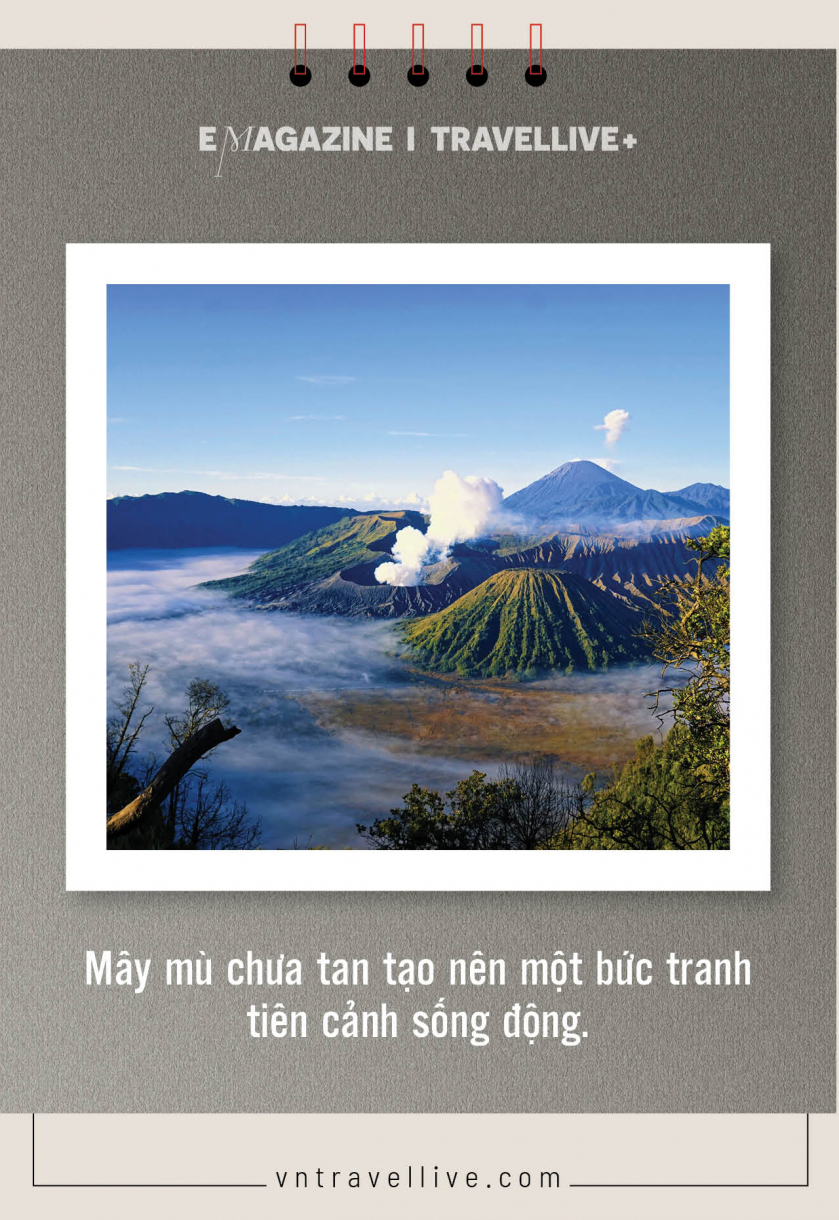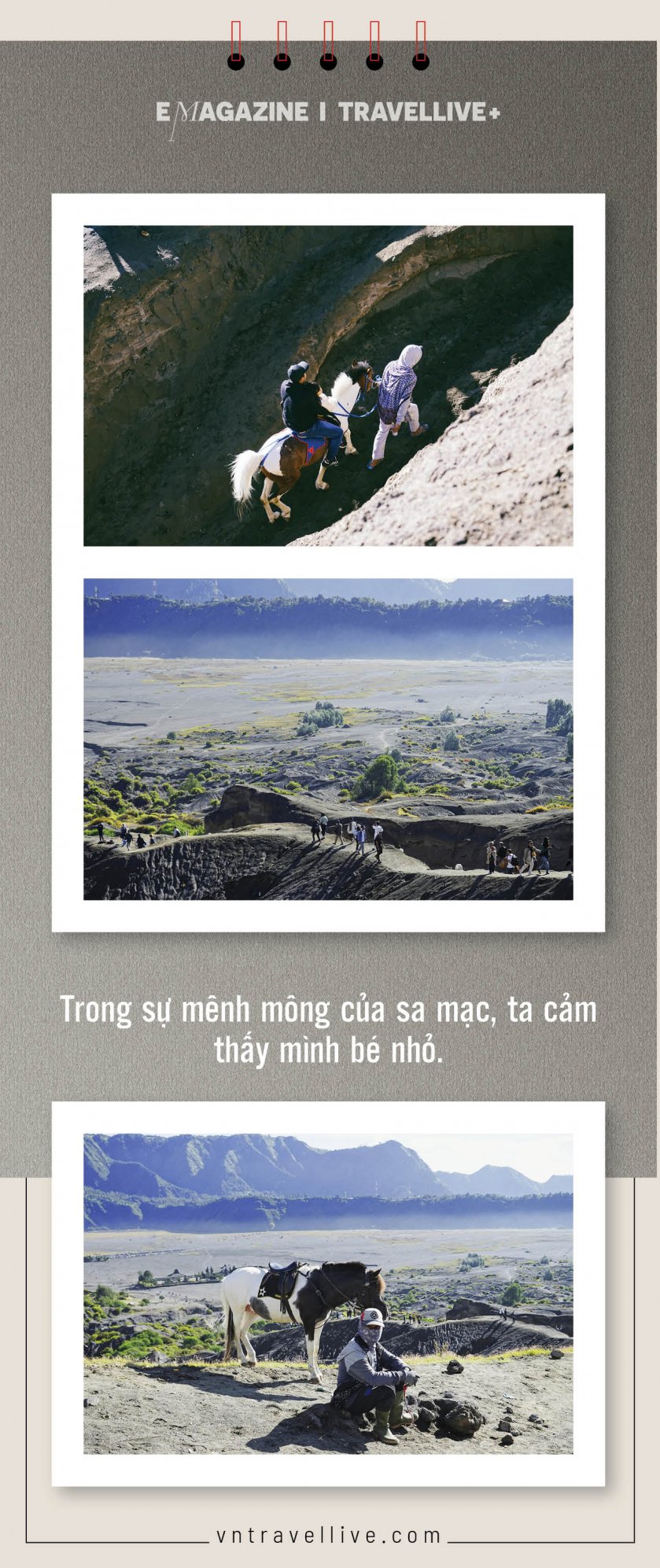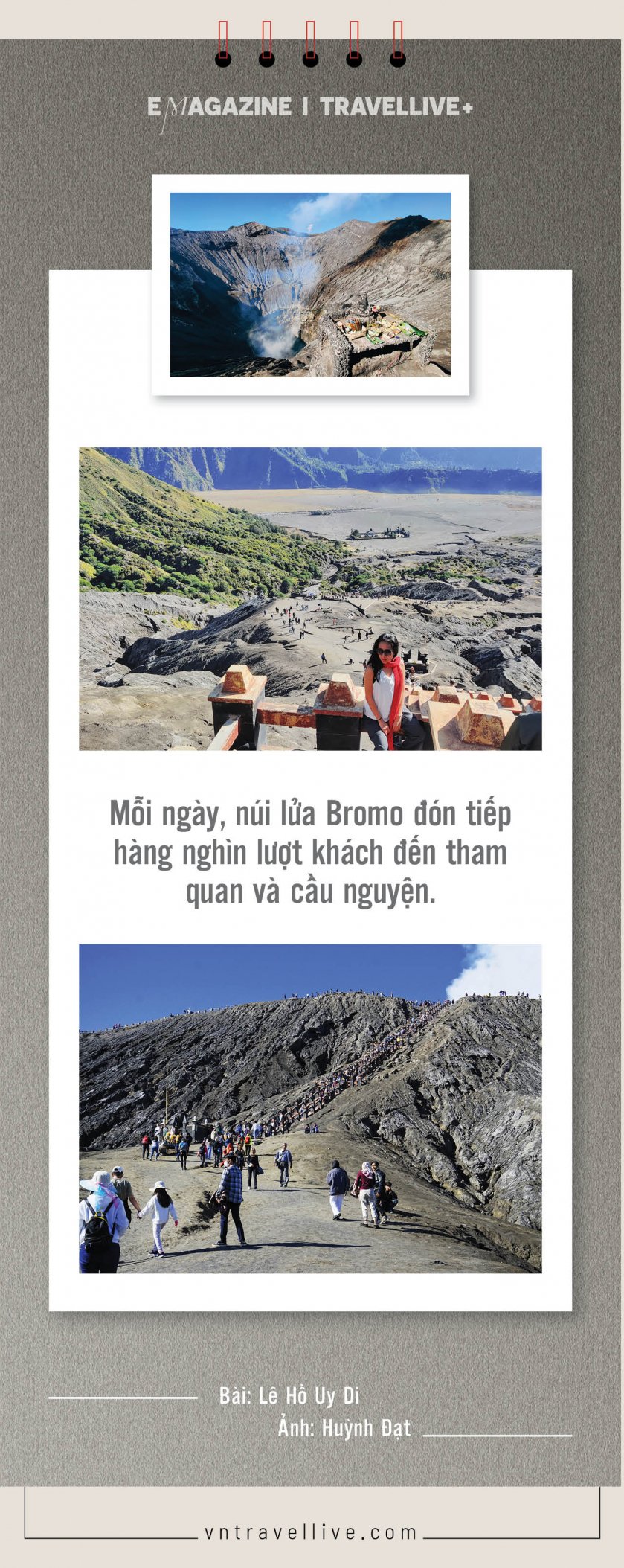On this land covered with lava dust, the harshness and difficulty of making a living of the indigenous people seems inversely proportional to the seemingly peaceful beauty and curiosity of travelers.

I arrived at Tan Son Nhat airport to check out at 6am on Saturday, then moved to Ngurah Rai International Airport (Bali) after a 3-hour flight and continued to wait for the domestic flight to Surabaya. It took me a day to get to East Java, Indonesia.
It was already past 10pm when I got off the bus and returned to the hotel. This was my first time in Indonesia’s second largest city, which attracts as many tourists as Bali because of its breathtaking natural scenery.
If Bali is famous for its poetic beaches, with the special emerald green color of the Indian Ocean and the top resorts in Southeast Asia, East Java, on the contrary, has active volcanoes and "torturous" trips that require high endurance from those who want to conquer.
When choosing this trip, I only imagined the scenery through pictures and lowered my expectations by 20-30%, but Bromo volcano has been famous for a long time so I chose this as my summer trip abroad mostly out of curiosity.

By evening, I was too exhausted to go out and explore the night market in Surabaya, so I decided to stay at the hotel to rest. In the morning, after a deep sleep, I was informed by the hotel receptionist that there would be a parade to celebrate Indonesia's Independence Day today, even though the main holiday on August 17 was still almost a week away.
Indonesian people celebrate their National Day very early, they take to the streets in groups dressed as Hindu guardian gods, wearing traditional costumes, choirs, bands, dancers... following each other in groups. They sing, dance, cheer, bringing a joyful and exciting atmosphere to every street they pass through.
My spirit on the second day was also much better thanks to that. The Indonesian people are hospitable, when they saw tourists curious about the festival, they always invited us to join the parade, dance and take pictures.
Before I could fall in love with the hospitality, I had to quickly move to the Bromo Tengger Semeru National Park to prepare for the real journey. The trip took the tour group another 6 hours by car.

The bus took us 100km south of Surabaya. The further we went, the more we felt the cold air. This land is 1000 meters higher than Da Lat in Vietnam. Every afternoon, fog would spread down to every corner, obscuring the tops of the hills and mountains here, no matter how clear the sky was that morning.
When I arrived at the homestay, it was already mid-day, so I had a short break before visiting the Tengger village, an ethnic group closely related to Mount Bromo because to this day, the 90,000 Tengger community still maintains the custom of sacrificing to Mount Bromo to pray for peace and luck in life.
Our tour to the village was caught in a rainstorm so the car could not move into the village and could only stop at their cultivated fields. During this season, the Tengger people grow green onions and cabbage. I don’t know if it is due to the soil characteristics or not, but the vegetables grown here are much larger than the same vegetables in Vietnam. It is known that the crops here are grown seasonally, each season has its own produce.
I returned to the homestay at dusk. The sunrise trek over the Tengger range would start at 1am.

At exactly 1am I was woken up and boarded a jeep to head to Mount Penanjakan. If you are wondering, this is the spot where you can fully enjoy the beauty of the Tengger range in general and Mount Bromo in particular.
What surprised me was that a lot of tourists were already here early, some were on tour and some were on their own. This crowd made me look forward to the scene I was about to see even more. The road to the sunrise viewing spot was only 500 meters. A campfire was already prepared, waiting for me and my friends.
Because it had rained in the afternoon, the clouds had cleared by this time and the moon and stars were visible. I heard that on clear, moonlit nights, you could see the Milky Way. On the night I arrived, there were occasional shooting stars streaking across the sky. Everyone was shouting and pointing to each other to see this phenomenon that not everyone gets to see in their lifetime.
As the morning approached, the campsite became more crowded. There were not only tourists but also local people. Unlike tourists who came to see the sunrise, the local people came to see the sunrise for spiritual reasons. They came to pray.
As dawn began to break, everyone stood up and found a place to stand where they could easily see. Some were filming, taking pictures, chatting animatedly, but others were just silently watching. I could see a few heads bowed, hands clasped, and the murmur of prayers coming from them.

The sun was shining its first rays. The Tengger Range and Mount Bromo were now clearly visible. I was speechless and a little moved. Because I understood why people would travel so far to this barren land full of lava dust just to see it for a short while, because the scene that was more beautiful than imagination was unfolding before my eyes.
The Tengger Range features three volcanic peaks: the dormant 2240 meter Mount Batok, the still active 2329 meter Mount Bromo and further south outside the crater wall is the majestic 3676 meter Gunung Semeru, the tallest active volcano in East Java.
The smoke rising from the mountain mouth was white, looking like a bunch of fluffy cotton. The mist still wrapped around the foot of the mountain like a gentle white silk ribbon. When the sun rose high, the mist dissipated and the "Sand Sea" desert gradually appeared. This is a desert formed by lava dust. Only by crossing this desert can one reach the foot of Mount Bromo.

I left Penanjakan and continued 3.8km to reach the "Sea of Sand" desert. There are 2 ways to cross the desert: walking and hiring a pack horse. The horses here are specially trained to carry tourists for about 200-250 Rupiah/round trip.
Standing on Penanjakan, the volcanoes appear like fingertips, but up close, their majesty can overwhelm you. The day was clear, white clouds drifted lazily across the deep blue sky. Below, groups of people and horses crossed the black desert.
At the foot of the mountain, I continued to see crowds of people, as numerous as ants, following each other on the 250 steps leading to the crater. Before that, some flower vendors invited me to buy flowers for prayers. Each bouquet sold for 30,000 Rupiah, was made from dried chrysanthemums that had been dyed.

Just from the foot of the mountain, I heard the volcano roaring. It is known that there are periods when the volcano still shakes violently but still does not erupt. At Bromo Tengger Semeru National Park, there is a team of experts monitoring the volcano. If the volcano is in a safe stage, tourists and locals will be allowed to visit. If there are signs of instability, the National Park absolutely does not allow outsiders to get close to the volcano area.
The scene before my eyes was like a religious movie, when people were walking together on pilgrimage. Many tourists, especially those from the West, were very excited about this tour. They prepared a lot of filming equipment, hoping to capture the most beautiful pictures.
Sometimes I even saw very old men with fancy camera equipment. They seemed to be photojournalists from foreign magazines or professional photographers. This partly explains why East Javanese people in particular and Indonesians in general are proud of their landscapes.
The closer they got to the crater, the louder the roaring grew. In the heart of the mountain, where the white smoke formed into a wispy white cloud, bouquets of flowers were thrown down one after another to ensure that Brahma had witnessed the prayer.
I stood on the crater, letting my soul drift down to the black desert below and wondered when I would be able to fully admire the beauty of this world.
When the sun was high in the sky, the crowd lessened, the jeep continued to take me across the black desert back to the homestay. The end of the first destination in the journey to East Java.
(to be continued...)
















